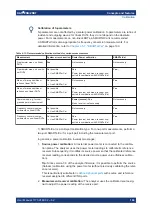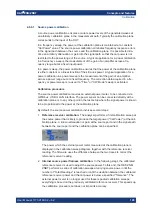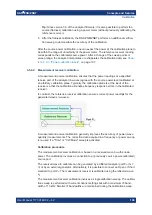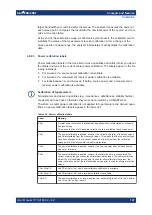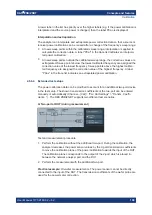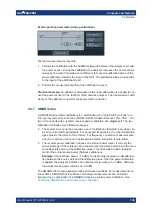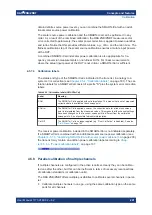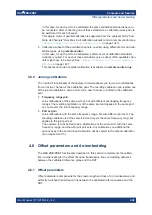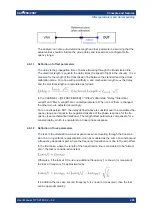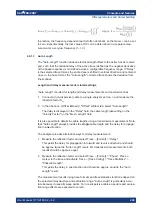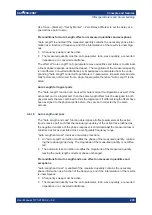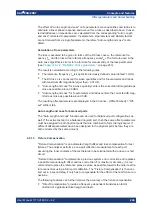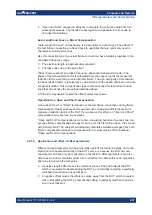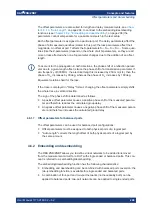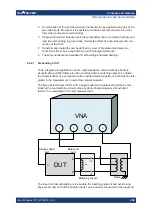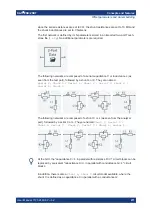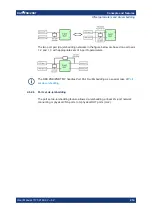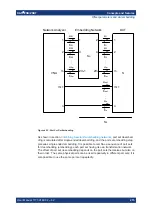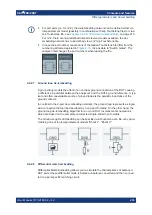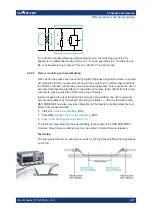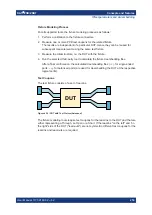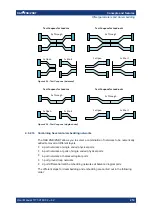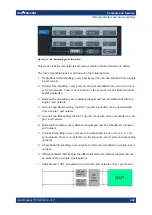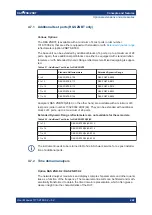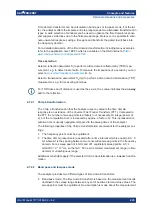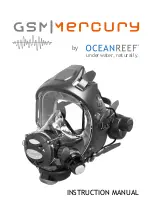
Concepts and features
R&S
®
ZNB/ZNBT
208
User Manual 1173.9163.02 ─ 62
The offset parameters are also suited for length and delay measurements; see
on page 204. In contrast to the embedding/deembedding
functions (see
Chapter 4.6.2, "Embedding and deembedding"
parameters cannot compensate for a possible mismatch in the test setup.
Each offset parameter is assigned to a particular port. The delay parameters affect the
phase of all measured quantities related to this port; the loss parameters affect their
magnitude. An offset at port 1 affects the S-parameters S
11
, S
21
, S
12
, S
31
... Some quan-
tities (like the Z-parameters) depend on the whole of all S-parameters, so they are all
more or less affected when one S-parameter changes due to the addition of an offset
length.
To account for the propagation in both directions, the phase shift of a reflection param-
eter due to a given length offset is twice the phase shift of a transmission parameter. If,
at a frequency of 300 MHz, the electrical length is increased by 250 mm (λ/4), then the
phase of S
21
increases by 90 deg, whereas the phase of S
11
increases by 180 deg.
Equivalent relations hold for the loss.
If the trace is displayed in "Delay" format, changing the offset parameters simply shifts
the whole trace in vertical direction.
The sign of the phase shift is determined as follows:
●
A positive offset parameter causes a positive phase shift of the measured parame-
ter and therefore reduces the calculated group delay.
●
A negative offset parameter causes a negative phase shift of the measured param-
eter and therefore increases the calculated group delay.
4.6.1.7
Offset parameters for balanced ports
The offset parameters can be used for balanced port configurations:
●
Offset parameters must be assigned to both physical ports of a logical port.
●
"Auto Length" corrects the length offset of both physical ports of a logical port by
the same amount.
4.6.2
Embedding and deembedding
The R&S
ZNB/ZNBT allows you to define virtual networks to be added to/removed
from the measurement circuit for a DUT with single ended or balanced ports. This con-
cept is referred to as embedding/deembedding.
The embedding/deembedding function has the following characteristics:
●
Embedding and deembedding can be combined with balanced port conversion: the
(de-)embedding function is available for single ended and balanced ports.
●
A combination of four-port and two-port networks (not necessarily both) can be
applied to balanced ports; two-port networks can be applied to single ended ports.
Offset parameters and de-/embedding

